American Military Patches, Other Insignia and Decorations of World War Two by Dr. Howard G. Lanham c.2011
Dating Metallic Insignia: Distinctive Insignia
1920-1945 Period
Sergeant Alex Arch wearing DIs of the 6th Field Artillery Regiment (Approved 1 April 1922) on his standing collar

|
|
Earliest 20th Infantry Regiment DI
They were gilt or brass colored.
Design Approved 8 March 1922

| |
The following is a brief introduction to dating U.S. Army distinctive insignia, called DIs or DUIs (distinctive unit insignia). They are usually small enameled coat of arms, which often depict symbols of the history of the unit they represent and the sometimes have the motto of the unit. Distinctive insignia are used to indicate component units, such as regiments or battalions. Although the traditions of U.S. Army units may go back to the early history of this nation this class of insignia and the idea of a unit heraldic crest is relatively modern. During World War One the United States Army found itself allied with British and French forces. Both of these nations have well-established regimental traditions. It is perhaps natural that American soldiers compared their unit traditions with those of the allies. During the war the unofficial use of smaller unit badges began with squadron pins in the Air Service. In August 1919 the U.S. Army began officially recognizing regimental coat of arms, which were originally displayed on the colors and not used as insignia. This was later expanded to include a badge to be worn on the white mess jacket.
The final step in the development of distinctive insignia was to approve them to be worn on the service uniform of all soldiers as an insignia. The instigator of regiment coats of arms appears to be Colonel (later Brigadier General) Robert Edward Evan Wyllie (1873-1961), Chief of the Equipment Branch of the General Staff and a person with an interest in heraldry. Circular 244 of 1921 approved wearing the designs and Colonel Wyllie, wrote an article, which appeared in the March 1921 issue of the Infantry Journal that was titled "Regimental Badges and Coats of Arms." The revision of AR 600-40 of September 27, 1921 included this paragraph: .
46. Regimental Insignia and Trimmings-a. Subject to the approval of the War Department and as a means of promoting esprit de corps, each regiment or similar organization is authorized to adopt and wear, as a part of the uniform, distinctive insignia or trimmings. Distinctive insignia should bear the regimental badge or coat of arms or similar device having historical significance connected with the regiment, such as the ornament of the regiment when originally organized or that worn is some prior war. If trimmings are adopted, the color should have some historical significance connected with the regiment. Colored trimmings will not be worn with the cotton service or white uniforms. b. Where insignia or trimmings other than those indicated above are desired, the reason for variation must be made plain when the approval of the War Department is requested. c. If a distinctive insignia of trimming is adopted, it must be worn by the entire personnel of the regiment and the expense of adopting and wearing it must be borne by the personnel, as personnel, as public funds are not available for this purpose.
Not All Distinctive Insignia are Crests. The 4th Infantry Regiment wore this cloth trim on the shoulder loop.
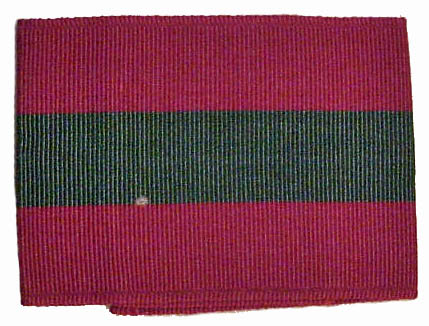
|
On March 18, 1922 the 51st Artillery Regiment was the first unit to receive approval for wearing a submitted design. During the next two decades they were approved for most regular and national guard units. DIs were worn on the front of the campaign hat, on the standing collar of enlisted men's coats behind the collar disks, and on the shoulder loops of officer's coats and on the lapels of enlisted men's coats. DIs were worn on the left side of the overseas cap (garrison cap) when that was reintroduced, and moved from the standing collar to the lapels of enlisted men's coats when the lapel coat was introduced in 1926.
Pre-WWII DI for the 421st Infantry Regiment (Heavy Tank)
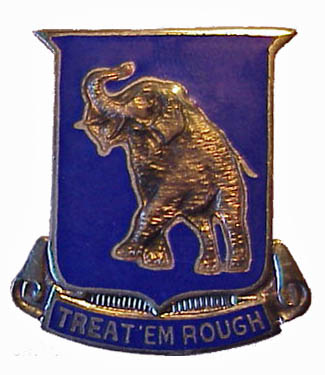
|
|
The back of the 421st Inf Regiment (Heavy Tank) DI with a pin-back and Jeweler's Catch

|
|
Pre-WWII DI for the 38th Infantry Regiment
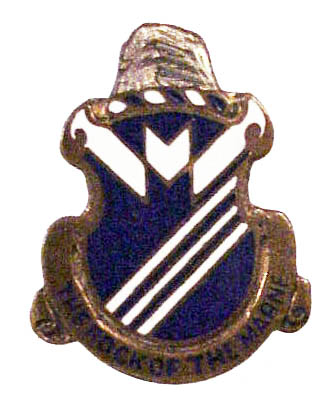
|
|
The back of the 38th Infantry Regiment DI with a pin-back and heavy Jeweler's Catch typical of many early DIs
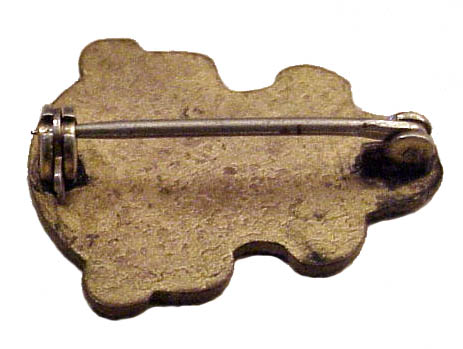
|
|
The above 421st Infantry Regiment (Heavy Tank) Distinctive Insignia is an unmarked pre-World War Two pin-backed variety identified to a known officer with prewar service in the unit.
Officer c. 1940 wearing DIs 184th Infantry Regiment on his Shoulder Loop and Garrison Cap

|
|
An Enlisted Man wearing 101st Cavalry Regiment DIs on this lapels
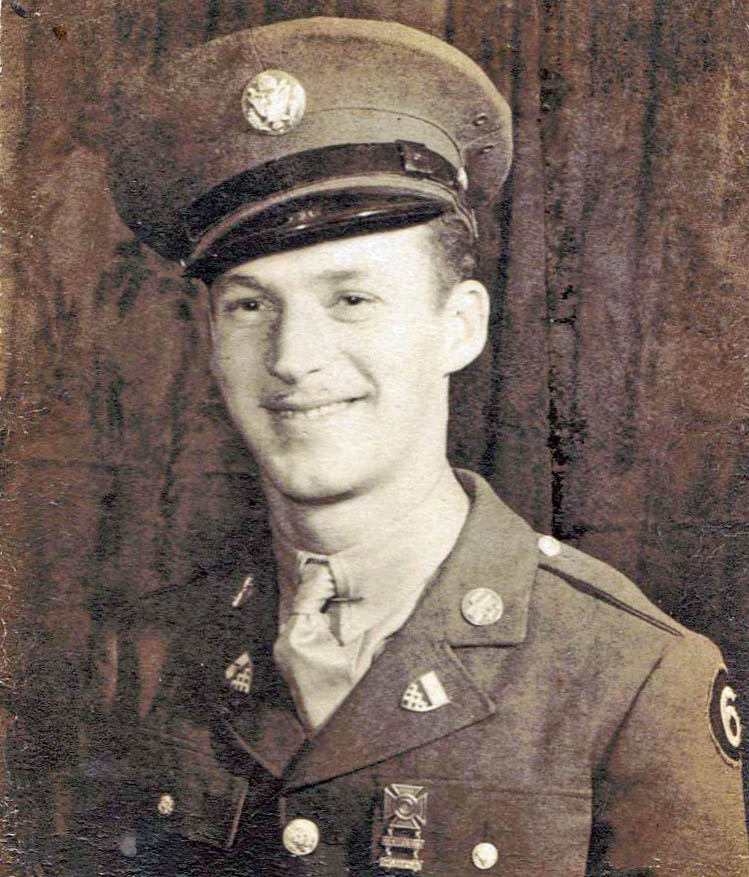
|
|
101st Cavalry Regiment Distinctive Insignia
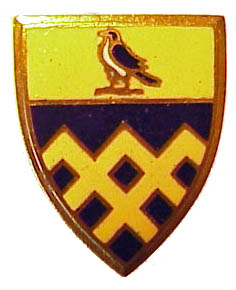
|
|
12th Infantry Regiment DI
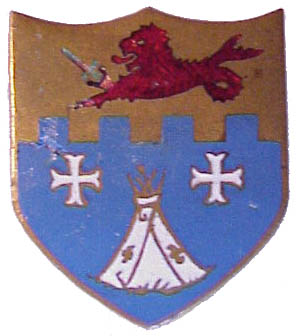
|
|
Back of 12th Infantry Regiment DI
Marked: J. R. GAUNT NEW YORK MADE IN ENGLAND
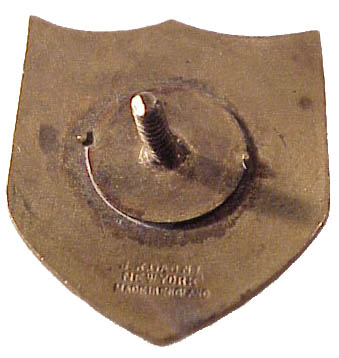
|
|
103rd Infantry Regiment DI
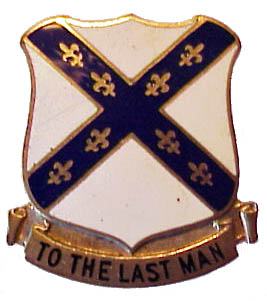
|
|
Back 103rd Infantry Regiment DI
Marked: Am Metal Craft Attleboro Mass
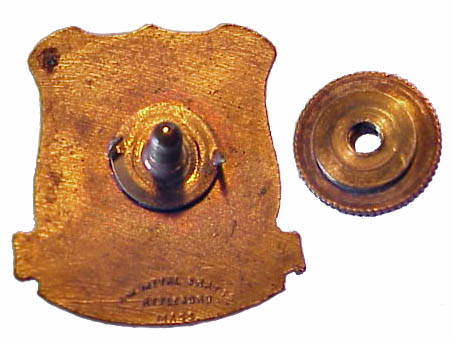
|
|
110th Field Artillery Regiment DI
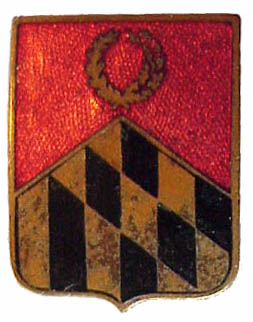
|
|
Back of 110th Artillery Regiment DI
Marked: HANCO and Rooster
(Irvin H. Hahn Co., Baltimore)
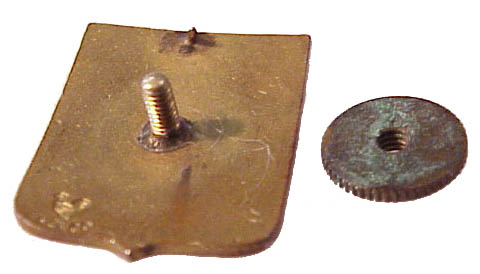
|
|
The earliest distinctive insignia were either screw post and retaining nut or pin-back construction. The pin-backed ones would have been useful on officer's shoulder loops while the screw backed ones would have worked well on the Montana peak campaign hats in use prior to the general adoption of the garrison cap. It does seem to me that the oldest ones are mostly screw back construction and that pin-backed ones became more common over time. On December 29, 1942 it was announced that the manufacture of distinctive insignia was to be discontinued and that future requests would only be considered under very special circumstances. On January 2, 1943 War Department Circular Number Six absolutely suspended the manufacture of existing DIs and the approval of new DIs designs for the duration of the war. It did not discontinue wearing of those DIs that had been produced. Many units tried to circumvent the rules and had ones ones manufactured in plastic or in silver. Prohibitions against wearing DIs in combat zones also existed. Many DIs are marked with the name of the manufacturer; for example, A. H. Dondero of Washington, D.C. was a prominent early maker.
19th Infantry Regiment DI
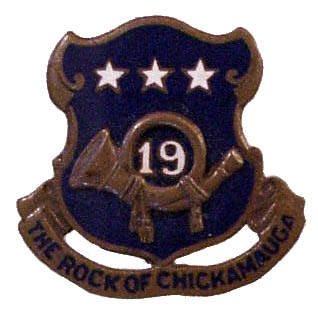
|
|
19th Infantry Regiment DI showing Dondero mark
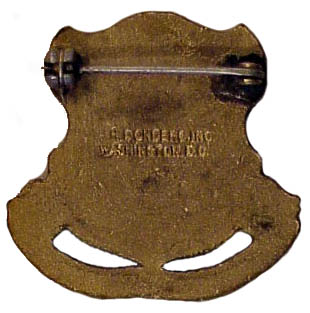
|
|
45th Armored Medical Battalion DI
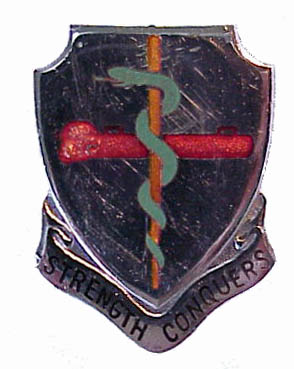
|
|
Back 45th Armored Medical Bn.
Marked: S. E. Eby Co Phila
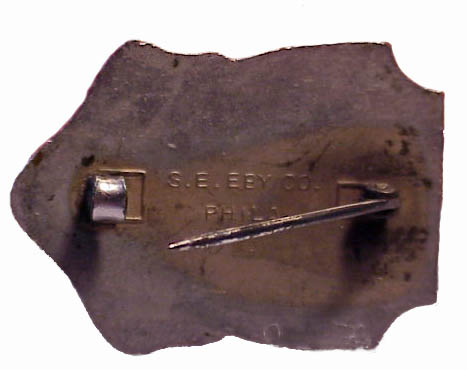
|
|
The 45th Armored Medical Battalion DI was acquired from a veteran. The unit was formed in 1942 and inactivated November 1945 in Germany. This is shown as an example of a good World War Two era pin-backed, open catch DI typical of this manufacturer.
Italian Made Cotter Pin-Back Distinctive Insignia
Italian Made 350th Infantry Regiment DI
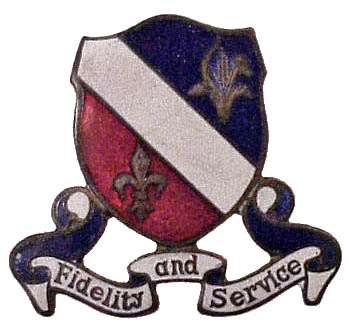
|
|
Back of the 350th Infantry DI
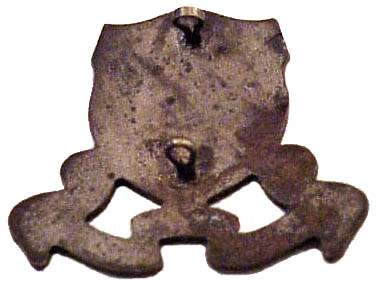
| |
This Italian-made distinctive insignia for the 350th Infantry Regiment was attached with cotter pins very similarly to many British-made insignia.
1945-1960s Period
Distinctive insignia remained in Army Regulations as an approved insignia even if their manufacture had been suspended for the duration and after 1947 approval of new designs was resumed. Some DIs were manufactured in Germany during the occupation period and have distinctive features. The Ballou clutch was introduced in 1942 and in the postwar era supplanted the older post and screw type with a few exceptions. Pin-back DIs were still manufactured during the postwar period.
1945-1960s Period German Manufactured Distinctive Insignia
German-Made 16th Infantry Regiment DI
This is a "German Painted."
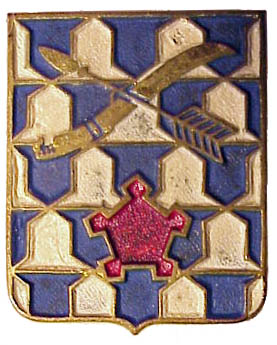
|
|
Back German Made 16th Infantry Regiment DI

|
|
Pin Back German Made 2nd Cavalry Regiment
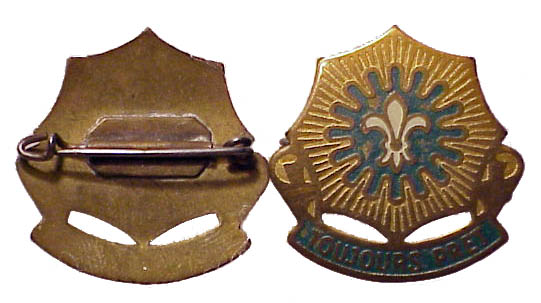
|
|
Screw Back German-Made 2nd Cavalry Regiment
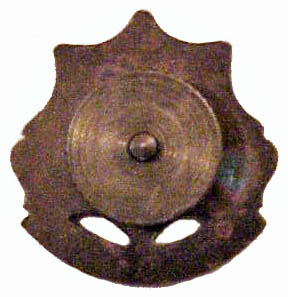
|
|
Once American Forces were on occupation duty in Germany U.S. Army Insignia were manufacturer locally and some unusual variations were produced. Our one example although postwar still uses a post and screw and the other has a unique safely pin like attachment.
British Made Pin-Back Distinctive Insignia
British-Made Army Air Force Technical Training Command DI
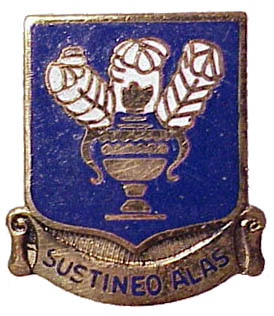
|
|
Pin-Back typical of British Manufacture
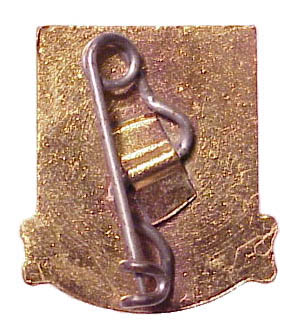
| |
I am uncertain if the above Army Air Force Technical Training Command DI was manufactured during or after the war.
1945-1960s Period U.S. Made Pin-Back Distinctive Insignia
15th Infantry Regiment DI
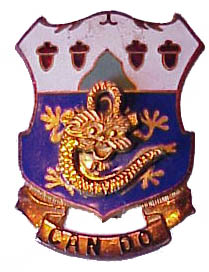
|
|
Back 15th Infantry Regiment DI
Marked: IE
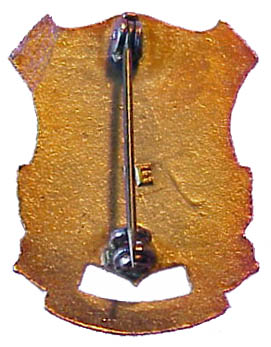
| |
This pin-back has the manufacturer's hallmark 1E for Emblem Supply Co., Inc of Central Falls, RI.
1960s-Current Period
The most recent type of distinctive insignia is marked on the back with a alpha-numeric manufacturer's hallmark code. These first appeared on all types of insignia during the 1960s. I am showing the distinctive insignia of the Army Medical Department. This is clutch back and marked "VANGUARD NY V-21 MADE IN U.S.A." Another example is that of the Army Security Agency Training Center and School, whose design was approved in 30 Oct 1953 and motto "Vigiles Salutis" means Sentinels of Security. The alpha-numeric manufacturer's hallmark on this example would date it to after the mid-1960s.
Army Medical Department DI 1986

|
|
Back Medical Department DI
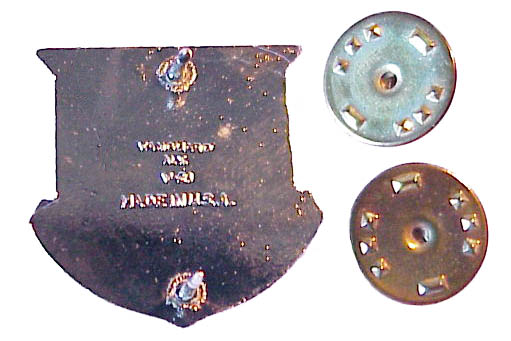
|
|
Army Security Agency Training Center and School DI

|
|
Back: Army Security Agency Training Center and School DI
Marked: Polk NYC P21
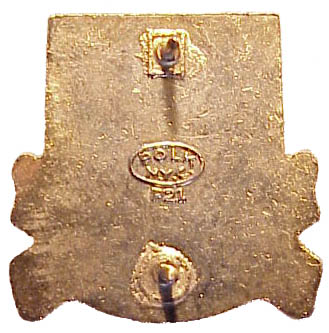
|
|
One interesting category of DI are those locally manufactured in Vietnam, nicknamed "beer can." They got that nickname because some of them literally were manufactured from metal taken from beer cans. Davis Station was the the CIA intelligence area and Special Forces Military Assistance Command Vietnam base at Tan Son Nhut Airport, Saigon, South Vietnam.
Davis Station Beer Can DI Vietnam War
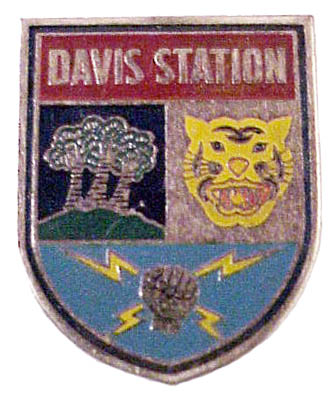
|
|
Back Davis Station Beer Can DI Vietnam War
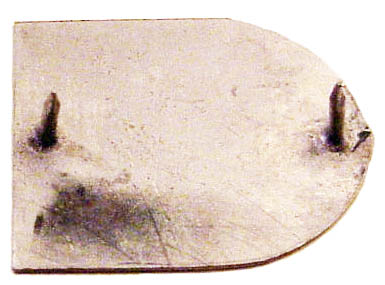
| |
References:
- Capistrano, Robert, "Collecting Distinctive Insignia of WW II: Part II", The Trading Post, LXII, No. 2, April-June 2003: 17-22.
- Capistrano, Robert, "Collecting Distinctive Insignia of WW II: Part II", The Trading Post, LXII, No. 3, July-September 2003: 17-24.
- Massaro, Joseph M., Distinctive Insignia of the U.S. Army Air Forces 1924-1947, Austin, TX: International Publishing Co., 1987.
- Grosvenor, Gilbert et al., Insignia and Decorations of the U.S. Armed Forces (Washington: National Geographic Society, 1944)
- Lanham, Howard G., "Method for Approximating Date of Metallic Insignia", The Trading Post, July-September 1970: 74)
- Stein, Barry Jason, U.S. Army Heraldic Crests, Columbia, S.C.: University of South Carolina Press, 1993.
- War Department, Army Regulations No. 600-35: Prescribed Service Uniform, Washington, DC: Government Printing Office, 1941.
- War Department, Army Regulations No. 600-35: Prescribed Service Uniform, Washington, DC: Government Printing Office, 1944.
I would also like to thank Robert Capistrano and Jay Graybeal for their assistance with this page.
Dating Clutch Fasteners on Insignia
Back to Enlisted Branch Insignia of World War Two
Back Dating Various Categories of Insignia to period of use.
Back to Insignia of World War Two
